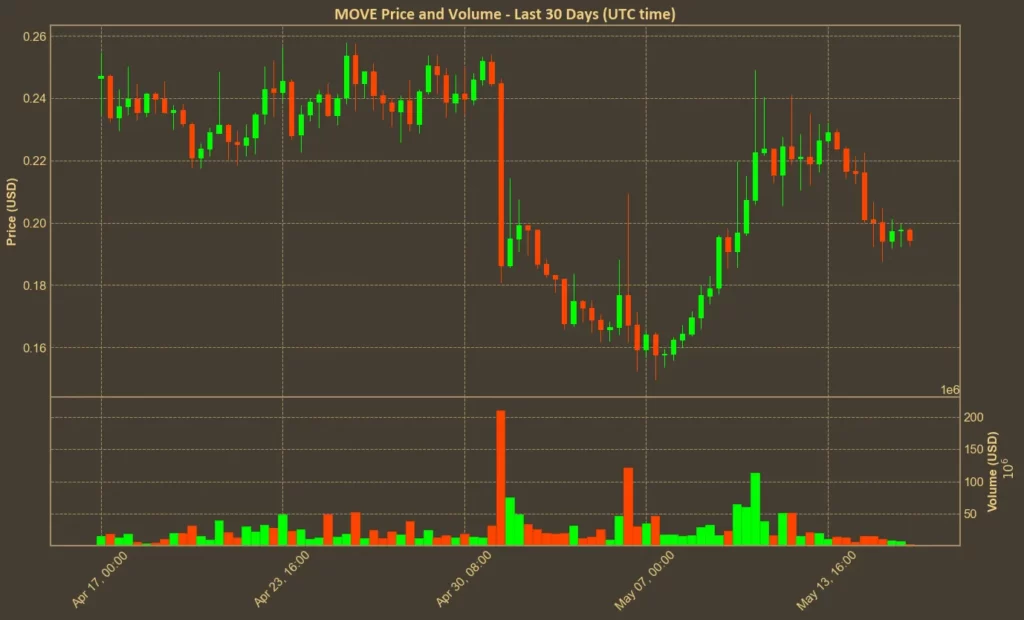Movement Labs is facing its biggest crisis since its launch. Internal documents leaked online show that promises of large token allocations were quietly made to early advisers – deals the public and investors never knew about. The fallout has been swift, sparking internal rifts, legal threats, and a steep drop in MOVE’s token price. The recent report outlines the facts behind the ongoing scandal and the shifts taking place inside the project.
Table of Contents
Leaked Memos Uncover Insider Deals
Two business memos surfaced showing that Movement Labs promised 2.5% of MOVE’s total supply – worth more than $50 million – to Sam Thapaliya. He is the founder of Zebec Protocol and was described internally as a “shadow founder”.
According to the documents, another 5% was loaned to him for marketing and market-making purposes. These agreements were never disclosed to the public before the token went live.
Although the company insists these documents were “exploratory” and “non-binding”, legal language in the memos states that they could only be canceled with mutual consent. Thapaliya disputes the Movement’s claim that the deals were not final – he said:
“I plan on pursuing legally to exercise my claim to retrieve 2.5% of tokens.”
Employees told CoinDesk the agreements played a major role in shaping the early direction of the project. His name also came up in internal conversations related to a deal with Chinese market maker Web3Port, who was later blamed for dumping millions in MOVE tokens.
Another Silent Backer Emerges
Another name associated with hidden token deals is Vinit Parekh. A 2023 agreement shows Movement Labs promised him control of another 2.5% of MOVE’s supply. Through his firm, Digital Incubation Group, Parekh was also set to receive $50,000 annually for every $1 million raised by Movement Labs.
Source: CoinDesk
These agreements were also structured as memoranda of understanding. Like the deal with Thapaliya, they could only be ended with the consent of both parties. Sources said Parekh was often present at Movement’s San Francisco office. Still, he insisted no money ever exchanged hands, and that his involvement came from personal interest in the ecosystem.
Parekh’s role included shaping the token’s framework and helping with early-stage decisions. While the firm claims the contracts were informal, the provisions suggest deeper commitments that were never shared publicly.
Internal Breakdown and Co-Founder Rift
This scandal has revealed a major breakdown between Movement Labs’ co-founders. Rushi Manche was removed earlier this month after weeks of rising tensions. He blames early business decisions on his partner, Cooper Scanlon, who has also stepped down as CEO but remains part of the company. Manche said:
“When priorities changed, our roles changed, but Cooper’s decisions in the early days heavily shaped the way the launch went.”
After leaked documents showed Scanlon’s signature on controversial deals, Manche reposted messages on X accusing his partner of shifting blame.
Read also: Movement Labs Rebrands Under New CEO – MOVE Still Drops 12%
Market Collapse After Token Dump
Much of the current unrest began after MOVE’s token launch ended in disaster. On December 10, 2024, just one day after trading began, 66 million MOVE tokens were dumped into the open market. The sell-off totaled $38 million and sparked immediate suspicion about coordinated insider activity.
We have explained Movement (MOVE) past controversies in this article.
These tokens were part of a market-making deal with Rentech, a little-known firm linked to Web3Port. The agreement gave Rentech about 5% of the total supply. Internal reports showed the deal was structured to boost MOVE’s price to a $5 billion valuation before dumping the tokens. Critics said this revealed deep governance issues, as Rentech was tied to both Movement and its market maker.
Binance acted in March by banning Web3Port and freezing all related funds. Coinbase followed, announcing on May 15 that MOVE would be suspended for failing to meet listing requirements. The decision further drove down MOVE’s market position.
Price Action Shows Weak Recovery
As of May 16, MOVE’s price has dropped by over 70% since its debut. The token currently trades at $0.195, with a market cap of around $500 million. The daily trading volume stands at $44 million. Though the price saw a modest bounce from $0.17 over the last week, momentum remains weak.

The Relative Strength Index (RSI) climbed above 40 after staying under 30 for several days, suggesting a slight cooling of selling pressure. However, MOVE is still trading below all key exponential moving averages. The 20 EMA sits at $0.211, the 50 EMA at $0.27, and the 100 EMA at $0.40 – all of which continue to act as resistance. Unless MOVE breaks above these levels, the market is likely to stay bearish.
Looking Ahead
With public trust shaken and legal threats mounting, Movement Labs is now trying to reset. The project’s new identity, Move Industries, is being presented as a shift back to “crypto’s radical roots,” according to messages posted by the new leadership on X.
Torab, now the acting CEO, acknowledged the earlier failures and said future plans would focus on development and developer support. The rebrand includes regular “town halls,” tighter governance, and support for decentralized applications. Whether that will be enough to recover from the backlash remains unclear.
Read also: Mantra (OM) Is Still Down 90% – And There’s No Sign of a Comeback




